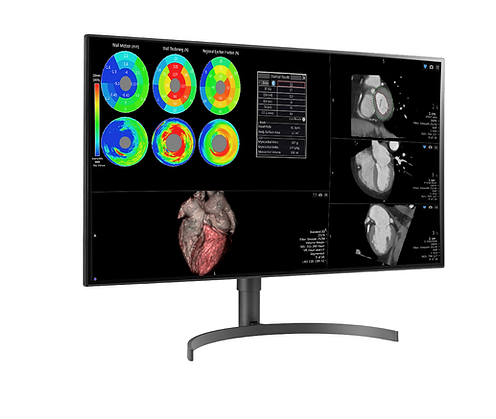Radiology Diagnostic Display Monitors


Double Black Imaging - CL8MPS32C

Double Black Imaging - CL8MPS32C


Double Black Imaging - CL8MPS32C
Double Black Imaging - CL8MPS32C
Display issues in Teleradiology

Grayscale image compliant with DICOM Standard 3.14

Grayscale image not compliant with DICOM Standard 3.14
Calibration Overview
Using non-DICOM compliant radiology diagnostic displays poses significant risks to patient safety, carries potential legal implications, and fails to meet critical technical requirements necessary for accurate medical image analysis. Here's a quick overview of why using such displays is problematic:
Risks to Patient Safety
-
Reduced Image Quality: Non-DICOM compliant displays may not provide the necessary resolution, contrast ratio, and color reproduction needed to accurately interpret medical images, leading to potential misdiagnoses or overlooked conditions.
-
Inconsistent Image Presentation: Without adherence to DICOM standards, there's a risk of variability in how images are presented, making it challenging for radiologists to detect subtle yet critical details in the images.
Legal Implications
-
Liability for Misdiagnosis: Using substandard displays can lead to diagnostic errors. If a patient is harmed as a result, healthcare providers and radiologists may face legal action for negligence.
-
Non-compliance Penalties: Regulatory bodies may impose fines or sanctions on healthcare facilities that fail to comply with industry standards, including those related to medical imaging equipment.
Technical Requirements
-
DICOM Standard Compliance: The Digital Imaging and Communications in Medicine (DICOM) standard outlines specifications for medical imaging equipment, ensuring compatibility and consistency across devices. DICOM-compliant displays are calibrated to meet specific luminance, contrast, and spatial resolution requirements.
-
Regular Calibration and Quality Assurance: To maintain compliance, displays must undergo regular calibration and quality assurance tests to verify that they continue to meet the DICOM standards over time.
-
Image Consistency Across Devices: DICOM compliance ensures that medical images are displayed consistently across different devices, enabling accurate comparisons of patient scans taken at different times or locations.
In summary, the use of DICOM-compliant radiology diagnostic displays is crucial for accurate and reliable medical image
interpretation. Non-compliance not only jeopardizes patient health but also exposes healthcare providers to legal risks and fails to meet essential technical standards. Adopting and enforcing the use of DICOM-compliant displays is a fundamental aspect of providing high-quality, safe patient care in the field of radiology.

